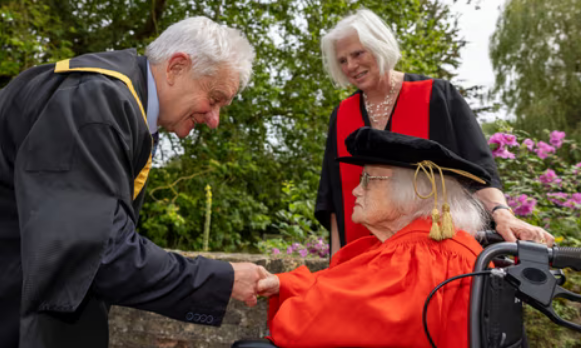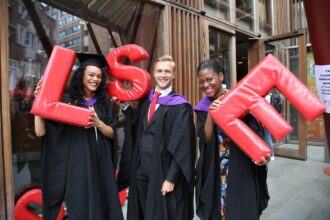Rosemary Fowler discovered the kaon particle during her doctoral research in 1948 but gave up PhD to start a family.
A trailblazing physicist who gave up her PhD 75 years ago to start a family has been awarded an honorary doctorate by her former university.
Rosemary Fowler, 98, discovered the kaon particle while conducting doctoral research at the University of Bristol under Cecil Powell in 1948, which helped him win the Nobel Prize in Physics in 1950.
Fowler’s discovery sparked a revolution in particle physics theory, and it has since been proven right. It predicted particles such as the Higgs boson, which was discovered at Cern in Geneva.
However, she left the university without completing her PhD to marry a fellow physicist, Peter Fowler, in 1949, a decision she later described as pragmatic after having three children in a time of postwar food rationing.
Sir Paul Nurse, the chancellor of the University of Bristol, has awarded her an honorary doctorate of science in a private graduation ceremony near her Cambridge home.
Fowler stated that she felt “very honoured.” However, she added, “I haven’t done anything since to deserve special respect.”
Nurse hailed Fowler’s “intellectual rigour and curiosity,” which “paved the way for critical discoveries that continue to shape the work of today’s physicists, and our understanding of the universe.”
At 22, Fowler noticed something strange in particle tracks: a particle that disintegrated into three pions, subatomic particles.
She stated, “I knew at once that it was new and would be very important. We were seeing things that hadn’t been seen before – that’s what research in particle physics was. It was very exciting.”
The track later labeled K, was evidence of an unknown particle, which is now known as kaon or K meson.
The K track was the mirror image of a particle previously seen by colleagues in Manchester. However, it decayed into two pions rather than three. The attempt to understand how these images were the same yet behaved differently continued to a revolution in particle physics.
Fowler left the university after publishing it in three academic articles.
Fowler was born in Suffolk in 1926. As a youth, she excelled in maths and science but found writing difficult. She was the only girl in her year to attend university.
She was among the first women to receive a first-class in physics; her three children also studied science.
Mary Fowler, her daughter, studied maths and geophysics at Cambridge before moving on to her academic careers in Canada, Switzerland, London, and most recently Cambridge from 2012 to 2020.














